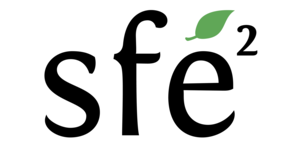Le changement climatique et l’augmentation des prélèvements en eau par les sociétés humaines provoquent l’assèchement d’un nombre croissant de rivières avec des effets dévastateurs sur leur biodiversité[1]. Cependant, les réseaux de rivières intermittentes (c.a.d. soumises à des assèchements) ont reçu peu d’attention de la part des scientifiques et des décideurs politiques. Dans ce contexte, une meilleure compréhension de la dynamique présente et future des communautés des cours d’eaux intermittents est essentielle pour mieux protéger ces milieux.
Ce stage de M2 s’inscrit dans le cadre du projet DRYvER qui étudie la biodiversité de six réseaux de rivières intermittentes en Europe. Le but du stage est de comprendre comment la variation des traits des organismes interagit avec le régime d’intermittence des rivières pour façonner la variation spatiale et temporelle des méta-communautés de macro-invertébrés[2]. Pour cela, le/la stagiaire s’appuiera sur un modèle théorique neutre déjà existant[3,4]. Ce modèle prend en compte les traits d’histoire de vie des espèces de macro-invertébrés aquatiques (fécondité, mortalité, résistance à la sécheresse) ainsi que leurs différents modes de dispersion (nageur, dérivant et volant). La tâche du stagiaire sera de dépasser l’hypothèse de neutralité et de prendre en compte la façon dont la variation des traits ainsi que leurs compromis maintiennent la coexistence à l’échelle locale et régionale entre espèces et génèrent les relations trait-environnement observées sur le terrain.
Si le stage avance bien, le stagiaire pourra alors utiliser des données empiriques pour calibrer le modèle afin sa capacité à prédire la structure spatio-temporelle des communautés de macroinvertébrés.
Approche – Développement et caractérisation d’un modèle théorique de méta-communautés basé sur les traits. Calibration du modèle à l’aide de techniques ABC (Approximate Bayesian Computation[5,6].
Compétences requises – Formation en écologie et en statistiques avec des compétences en modélisation (R/Rstudio). Intérêt et enthousiasme pour l’analyse de modèles complexes de biodiversité.
Contacts – François Munoz (francois.munoz@univ-lyon1.fr) et Loïc Chalmandrier (loic.chalmandrier@univ-grenoble-alpes.fr)
English version ——————————————————
Summary – Climate change and increasing water use by human societies are drying up a growing number of rivers, with devastating effects on biodiversity and associated ecosystem services1. However, intermittent river systems (e.g. prone to drying) have received little focus from scientists and policy-makers. As a result, there is no integrated strategy for conserving biodiversity and managing these environments in the face of climate change. In this context, a better understanding of the present and future dynamic of intermittent stream communities is essential.
This M2 internship is part of the DRYvER project, which studies the biodiversity of macroinvertebrate communities in six intermittent river networks in Europe. The Master student will define target functional groups of macro-invertebrates based on functional trait data. He/she will calibrate a dynamic meta-community model adapted to intermittent river dendritic networks2 using hydrological and ecological data. This meta-community model takes into account the life-history traits of aquatic macro-invertebrate species (fecundity, mortality, drought resistance) as well as their dispersal modes (swimming, drifting and flying). It also simulates several modes of intermittence (duration and spatial structuring). Once calibrated, the model will be used to project the impact of climate change on the diversity and abundance of aquatic fauna.
Approach – Use of a well-studied theoretical meta-community model. Model calibration using ABC techniques (Approximate Bayesian Computation3,4). Biodiversity projections will be made using future hydrology projections (already made).
Required skills – Training in ecology and statistics with strong modeling skills (R/Rstudio). Interest and enthusiasm for complex biodiversity models.
Contacts – François Munoz (francois.munoz@univ-lyon1.fr) et Loïc Chalmandrier (loic.chalmandrier@univ-grenoble-alpes.fr)
References
1. Messager, M. L. et al. Global prevalence of non-perennial rivers and streams. Nature 594, 391–397 (2021).
2. Crabot, J., Heino, J., Launay, B. & Datry, T. Drying determines the temporal dynamics of stream invertebrate structural and functional beta diversity. Ecography 43, 620–635 (2020).
3. Jacquet, C. et al. Disturbance-driven alteration of patch connectivity determines local biodiversity recovery within metacommunities. Ecography 2022, e06199 (2022).
4. Journiac, L. et al. How local disturbances and connectivity jointly shape the spatial and temporal structure of river network metacommunities. (in prep).
5. Jabot, F., Faure, T., Dumoulin, N. & Albert, C. EasyABC: Efficient approximate Bayesian computation sampling schemes. R package version 1.5. (2020).
6. Hartig, F., Calabrese, J. M., Reineking, B., Wiegand, T. & Huth, A. Statistical inference for stochastic simulation models–theory and application. Ecology Letters 14, 816–827 (2011).

Commentaires récents